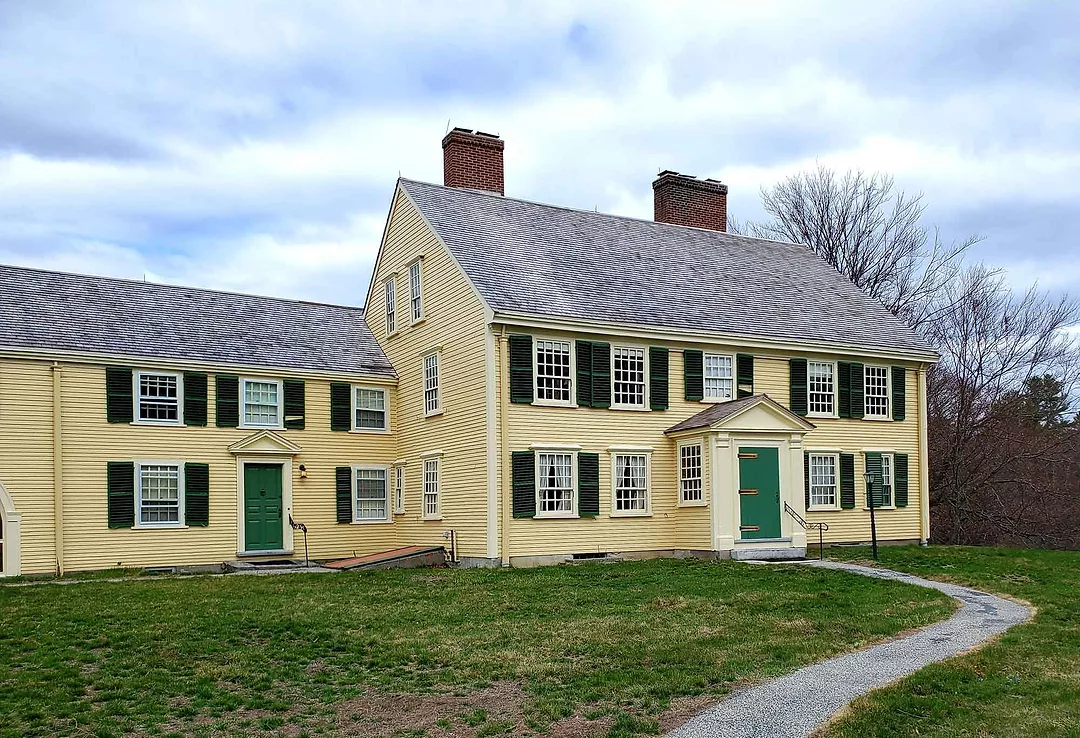On April 19, 1775, the long-simmering uneasiness between the American colonies and the British Crown broke out into open warfare with the Battles of Lexington and Concord. A year later, rebellion turned into revolution and, in 1783, after eight years of war, the United States of America gained its independence from Great Britain.
Today, visitors to Minute Man National Historical Park can experience firsthand where the American Revolution began. The Park passes through three towns; from the Battle Green in Lexington, past the Hartwell Tavern and Bloody Angle in Lincoln, and westward to the Old North Bridge in Concord. Parts of the five-mile-long Battle Road Trail literally follow in the footsteps of the Colonial militia and British Redcoats. Along the way, there can be seen many buildings, called “Witness Houses” by the National Park. These were the homes and farms of the people who lived here in the 18th century, and these houses bear mute testimony to the violence, chaos, and bloodshed of April 19, 1775.
Here are four of the eleven historic buildings you’ll see on the Battle Road Trail, highlighting the lives of the people who experienced the first day of the American Revolution.
Major John Buttrick House
Situated on land that was close to the North Bridge, the house was built by Jonathan Buttrick (John Buttrick’s father)between 1710 and 1717. John inherited it from his father and, in 1760, married Abigail Jones. Over the next 20 years, they would have ten children in this house. John Buttrick was always listed as a “Gentleman” in Concord town records and was a well-respected farmer who was active in town government. He held several town positions, including fence viewer, field driver, surveyor, and was even the town constable for three years.
At the time of the battle, 44-year-old John Buttrick was a Major in the Concord militia; it was he who gave the order, “Fire, fellow soldiers! For God’s sake fire!” after the British unleashed a volley on the advancing militia at the North Bridge. For the first time in American history, Colonial troops fired on the King’s Redcoats. In a very real sense, it was Major John Buttrick’s command that started the American Revolution.

Nathan Meriam house
Nathan Meriam House
The Meriam House was built at the junction of the Lexington and Old Bedford Roads around 1705 by Joseph Meriam. At the time of the Battle of Concord, it was home to Nathan Meriam, Joseph’s son. In 1775 there were nine people living at Meriam’s Corner, including Nathan and Abigail, both of whom were in their fifties, and seven children between the ages of 11 and 29. Meriam was a successful farmer who also served as a Concord town selectman.
It was in the fields and woodlots around this house that fighting along the Battle Road began as the Redcoats left Concord on their return to Boston after the battle at the North Bridge. The retreating British column was attacked here by militiamen from the towns of Reading, Chelmsford, and Billerica. From this point on, as more and more militiamen arrived from the surrounding towns, the running battle would not cease until the British got back to the safety of Boston, almost 20 miles away.

Hartwell Tavern
Hartwell Tavern
Situated in the town of Lincoln, which was part of Concord at the time, the house was built by Samuel Hartwell as a wedding gift for his son Ephraim, who married Elizabeth Heywood in 1733. Along with the house came 18 acres of land that surrounded the building, as well as 12 additional acres nearby. When Samuel died in 1744, Ephraim inherited his portion of the family farm and by 1749 the farm was one of the most productive in Concord and consisted of 141 acres.
The couple began raising a family, and by 1756 there were nine children living in the house. It was then that Ephraim applied for, and received, a license to open part of his home as an inn and a tavern. It became a well-known stop along the Bay Road.
Along this stretch of road, now restored by the National Park Service, the British troops passed the Hartwell house, both coming into and going from Concord, on April 19, 1775. The Hartwell’s daughter, Mary, would later remember the sight of nearly 700 Redcoats marching past their home: “The army of the King marched up in fine order and their bayonets glistened in the sunlight like a field of waving grain. If it hadn’t been for the purpose they came for, I should say it was the handsomest site I ever saw in my life.”

Captain Billy Smith house
Billy Smith House
Built by Benjamin Whittmore between 1680 and 1692, the house and surrounding farm were sold to William and Elizabeth Dodge in 1758. The Dodges never lived on the farm but used it as a rental property. When they moved to New Hampshire they gave the house and 100 acres to their only daughter, Catherine Louisa who, in 1771 married William Smith.
As Captain of the Lincoln militia, Smith and his men were the first to arrive in Concord when they got the alarm that the Redcoats were headed that way. That was the extent of his service in the Revolutionary War, and, sadly, Captain Smith’s personal life was a hard one. He was known to have a drinking problem and he ran up a considerable amount of debt, causing his sister, Abigail Adams, (yes, that Abigail Adams) to sever all connection with him. He was so hated by the family that Charles Francis Adams, the son of John Quincy Adams, later said of his great-uncle, “The name is so common that I do not feel assured the Captain William Smith of Lincoln was the brother of Abigail Adams.” There are no written records of William Smith after 1783, and it’s not known when or where he died or where he was buried.
All photos by Richard Smith


